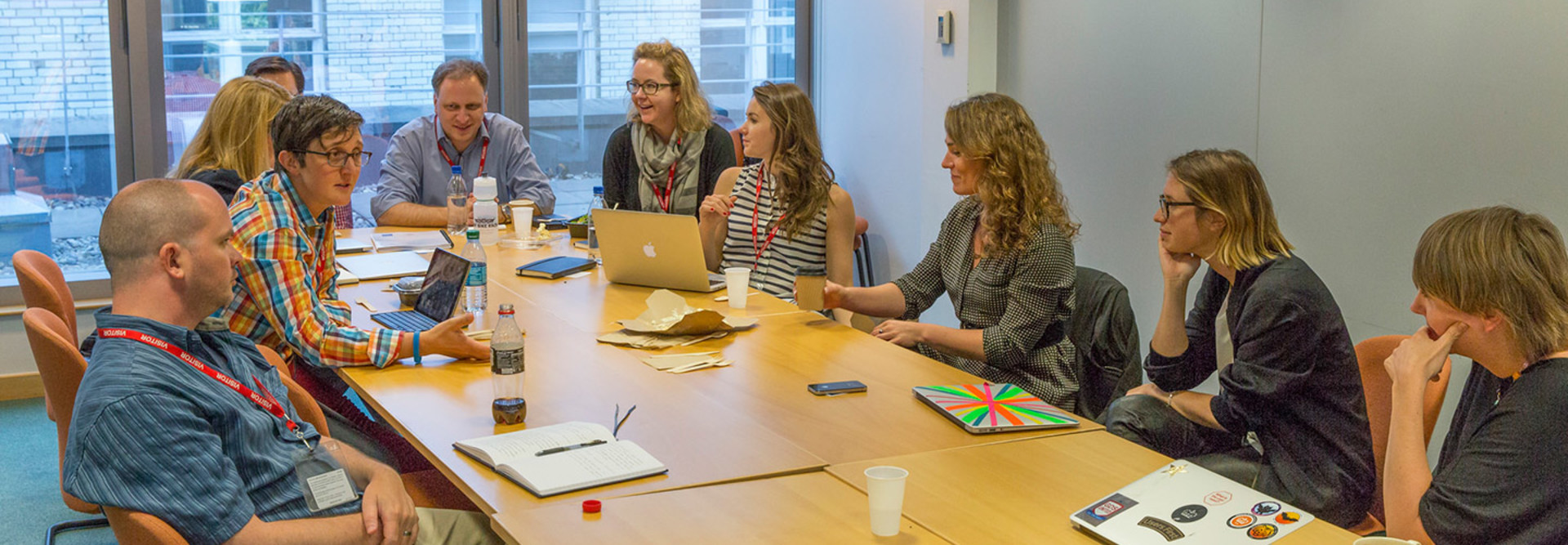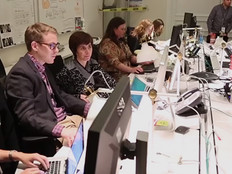What Is the Future of the U.S. Digital Service?
It’s arguable that few agencies better exemplified the Obama administration’s approach to technology, innovation and their combination in government than the U.S. Digital Service.
Formed as a continuation of the private sector tech experts who helped salvage Healthcare.gov, the USDS has since grown and expanded to become the go-to team for managing difficult digital projects across agencies, and now includes branches within the Defense Department. But will it survive in the Trump administration?
It’s unclear at this point, because the administration has yet to formally release its budget. In January, citing an unnamed source with knowledge of the Trump transition team’s planning, Federal News Radio reported that “USDS in its present form will not persist under the new administration.” On the other hand, as Quartz reported, Gerrit Lansing, the White House’s chief digital officer, announced on Twitter that the unit’s role in the Trump’s administration was secure: “FYI: @USDS is here to stay in the new administration. Period.”
Will the USDS survive, and if so will it change? And what will it focus on in the Trump era?
USDS Gets Praised
As Quartz notes, the USDS brings private sector tech talent into the government for tours of duty to help with complex digital projects. The goal is to build or fix these projects faster and cheaper than outside contractors. The model follows the playbook the Obama administration used to fix the botched rollout of Healthcare.gov when citizens could not access the website to sign up for insurance.
As Quartz reported: “Todd Park, the chief technology officer under Obama, brought in Google engineer Mikey Dickerson to supervise the failed website’s overhaul. Seeing how fast and effectively Dickerson and his team were able to repair the site, Park asked Dickerson to return to the White House and start a new nonpartisan unit: the USDS.”
Rep. Suzan DelBene (D-Wash.) told FedScoop that she is working to make sure “we have long-term support for” the USDS.
“You can come from the private sector, work for the federal government and bring your expertise, work with folks to solve a problem or implement a solution for maybe a year and then you go back to the private sector,” she says. “It really brings some of the talent in to tackle some of the challenges in the federal government.”
Dickerson, who left his post as the head of USDS in January and was replaced by Google Search veteran Matt Cutts, delivered a report to Congress in December that highlights the digital service’s best work on 11 different projects, perhaps in a bid to make the case that the agency should be maintained in the new administration.
Dickerson notes in the report that his group had given the government significant return on investment by delivering modern digital services for agencies. The report notes that $14 million of the $30 million appropriated for the USDS went to support the service, while the remainder was allocated to support other federal IT oversight and reform efforts, as FCW notes.
The report notes some top USDS achievements in 2016. Among them: the continuing modernization of the U.S. Citizenship and Immigration Services’ Electronic Immigration System (unveiled in 2014) and the group’s work at the Department of Veterans Affairs to simplify veterans-facing services through the Vets.gov website.
Other lawmakers have praised the idea of the USDS, especially bringing in private sector experts for tours of duty. As FedScoop notes, Reps. Ruben Gallego (D-Ariz.), and Will Hurd, (R-Texas), spent last weekend at the SXSW Conference promoting the idea of a “National Guard model”: bringing in private tech expertise to the government, in which IT pros would serve for only a weekend or two per year.
“We need a cyber national guard,” Hurd said in November, emphasizing cooperation between the federal government and private sector firms, according to FedScoop. “You can figure this out to where it’s beneficial for the companies” to hire them, if, for instance, they maintain their security clearance.
Changes Afoot for the USDS?
Despite the praise of the USDS, changes may be coming. An unnamed source, who requested anonymity to speak about the new administration’s plans, told Federal News Radio in January, “Trump transition leaders believe an organization like USDS is important and necessary,” the site reported, but that the USDS should be reduced in size from more than 200 employees to a few dozen tech experts.
“In its present form of nearly 200 people, it’s just too big and uncontrollable, and an organization independent of the technology bureaucracy will not persist,” the source said. “It’s also highly unlikely USDS will be funded as they requested. There is a belief that this group not reporting to the chief information officer of the government is not a successful or appropriate approach.”
The USDS has faced criticism that it isn’t taking on projects from the Government Accountability Office’s high-risk list, and, according to an unnamed government source cited by Federal News Radio, the USDS has, in some cases, rejected calls for help from agencies.
However, Nick Sinai, a former federal deputy CTO, who along with many colleagues in the White House helped set up the USDS before he left in November 2014, rejected the notion that the USDS hasn’t taken on complex projects.
“The fact that USDS has been successful and grown quickly is because Mikey, Haley and their teams have been able to avert crises and help cabinet secretaries with high-priority projects,” Sinai told Federal News Radio. “Did it grow quickly because Mikey is just a cranky guy with unusual access or because they knew what they were doing and were successfully fighting fires — some of which they could talk about and some which they can’t? Mikey got where he is because of his ability to recruit small teams of exceptional engineers, designers and product managers to tackle hard problems in concert with talented civil servants.”
The “Haley” that Sinai was referring to is Haley Van Dyck, who helped create the USDS but left toward the end of the Obama administration. According to a Politico report, she has returned to the USDS in an unannounced role.








